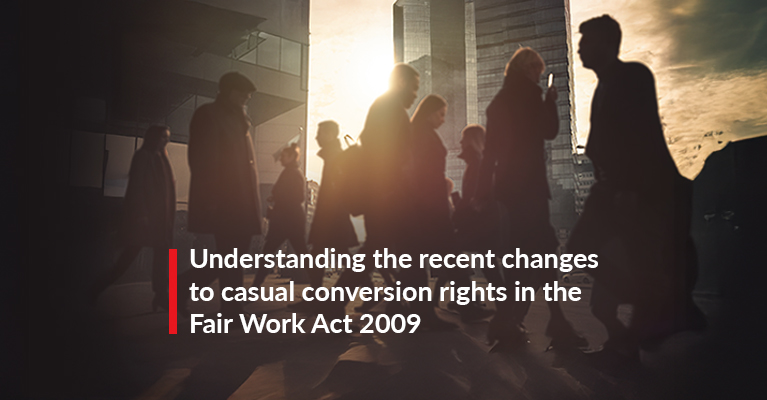As AI becomes more common in legal practice, many professionals are discovering an unexpected challenge: their tools don’t always work together. A typical day for an Australian lawyer might involve switching...
Kiren Chitkara , Legal Writer, Practical Guidance Succession Chloe Silvester , Head of General Practice, Practical Guidance November 2025 marks one of the most significant transformations in Australia...
For decades, LexisNexis ® has defined legal research. But research is just the beginning. Today, we’re transforming the entire legal workflow, evolving from a research provider into a technology partner...
Authored by Seeta Bodke, Head of Product - Pacific, LexisNexis® Legal & Professional We all know the stories: briefs cited fake cases. Submissions with phantom judgments. Entire arguments are built on...
Capital Monitor™ Editorial by Keely Garcia A single week in November 2023 saw four women lose their lives in South Australia amid domestic and family violence, an alarming record across any Australian...

Jada Lam, Practical Guidance Legal Writer – Employment and WHS
The Fair Work Act 2009 has been updated with the 'Employee Choice Pathway,' offering new rights for casual employees. Read on for essential insights to understand these changes, so you can guide your clients effectively.
If you or your client employs casual employees, there are recent important amendments to the Fair Work Act 2009 (Cth) (FW Act) regarding casual conversion. Effective from 26 February 2025, most casual employees can notify their employers of their intention to switch to permanent employment, whether it’s full time or part-time. This is due to the ‘Employee Choice Pathway’ that was introduced by the Fair Work Legislation Amendment (Closing Loopholes No. 2) Act 2024.
For those working with small business employers, the Employee Choice Pathway will be available from 26 August 2025.
What is casual conversion?
Casual employment has long been a staple in the Australian workforce, offering flexibility for both employers and employees.
However, it has at times led to uncertainties about job security and entitlements. Over the years the FW Act has been tweaked by different governments to address these concerns, resulting in different iterations of the casual conversion provisions which is part of the National Employment Standards.
Key Features of the Employee Choice Pathway
So what’s new with the Employee Choice Pathway? While it has simplified the casual conversion process for employers, it also gives employees more control at the same time.
Unlike previous provisions, employers are no longer required to make an offer of casual conversion to an eligible employee after a specified period of service. Instead, the new pathway gives casual employees greater autonomy by providing them with the right to notify their employer with their intention to convert to permanent employment, either on a full-time or part-time basis.
To qualify for conversion under the new pathway, employees must:
- have been employed for at least 6 months (12 months for small business employees);
- believe they no longer meet the definition of a casual employee defined under s 15A of the FW Act;
- not currently be engaged in a dispute with the employer about converting to permanent employment; and
- within the last six months, their employer has refused a previous notice, or they have resolved a dispute with their employer under the FW Act about their status as a casual.
What is a 'Casual Employee?
The definition of ‘casual employee’ was updated in August 2024. In short, casual employment is characterised by the absence of a firm commitment to ongoing work, typically accompanied by a casual loading. When determining if a job is truly casual, factors such as the real nature of the job, the employment contract, and whether there's a regular work pattern will also all be taken into account.
What are employers’ obligations since the changes to casual conversion rights?
Once an employee provides a notification, employers must respond in writing within 21 days, either accepting or not accepting the request.
Prior to providing the response, employers must consult with the employee (meaning, practically, this consultation should happen within 21 days of the notification being received). Employers can only refuse if the employee still meets the casual definition or on fair and reasonable operational grounds, such as significant changes being required to the way work in the enterprise is organised. The FW Act sets out further examples of what constitutes fair and reasonable operational grounds.
If the request is denied, the reasons must be clearly explained and provided in written form. If accepted, employers must inform the employee whether the change is to full-time or part-time, outline the new working hours, and specify when the change takes effect which must be the first day of the employee’s first full pay period after the date of the response (unless agreed otherwise).
The FW Act empowers the Fair Work Commission to deal with a dispute about the operation of the Employee Choice Pathway.
The Fair Work Ombudsman has also updated the Casual Employment Information Statement to include details of the Employee Choice Pathway, including details of the avenues for resolving a dispute around casual conversion.
Next steps for employers regarding casual conversion rights
To manage any risk of non-compliance, employers should consider the following steps:
-
Policy review and update
Employers should review and update existing policies and procedures to align with the new Employee Choice Pathway requirements. This includes ensuring that the process for handling employee notifications is clear and compliant with the FW Act. -
Training and communication
It is crucial to train HR personnel and managers on the new requirements and ensure they understand the consultation process with employees. Clear communication with employees about their rights and the process for casual conversion is also important. -
Documentation and record-keeping
Maintain thorough records of all employee notifications, consultations, and responses. This documentation will be vital in case of disputes or audits by the Fair Work Ombudsman. Also, ensure employment contracts are updated and tailored to the new employment status. -
System accuracy
Ensure that any HR systems used to enable or assist with the casual conversion process including provision of certain entitlements and continuity of service are accurate. -
Operational planning
Assess the operational impact of potential conversions on the business. Consider the implications for workforce planning, budgeting, and resource allocation to assess the business’ ability to accommodate changes or impact on enterprise operations. -
Dispute resolution preparedness
Have a clear process for handling disputes internally and be prepared for the any disputes that may be escalated to the Fair Work Commission.
Subscriber-only materials on casual conversion inside Practical Guidance Employment (Requires a LexisNexis® subscription)
- Guidance note: Casual conversion – Employee Choice Pathway
- Checklist for Employee Choice Pathway under Subdiv B, Div 4A, Pt 2-2 of the Fair Work Act;
- Casual conversion — Employee choice pathway — Letter for employee to notify that they no longer meet the definition of a casual employee
- Casual conversion — Employee choice pathway — Letter inviting employee to meeting to consult about an employee notification
- Casual conversion — Employee choice pathway — Letter giving notice that employer accepts employee’s notification
- Casual conversion — Employee choice pathway — Letter giving notice that employer does not accept an employee notification
As the employment law landscape continues to evolve, staying informed and remaining prepared for these changes will be crucial for legal practitioners.
Practical Guidance keeps you informed of legal and regulatory changes so you can mitigate potential risks. Latest legal updates authored by leading Australian experts, case trackers and key calendar dates help you provide quality, accurate advice faster. Learn more by visiting Practical Guidance.





